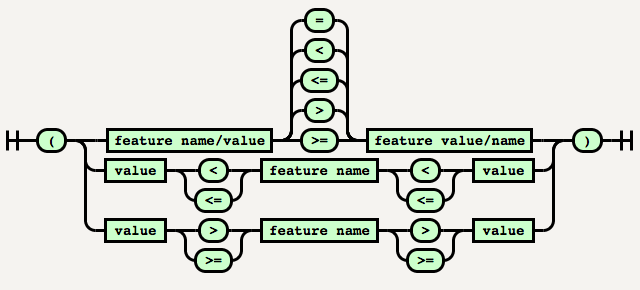|
|
# PostCSS Media Minmax
[](https://cssdb.org/#media-query-ranges)[](https://travis-ci.org/postcss/postcss-media-minmax) [](https://www.npmjs.com/package/postcss-media-minmax) [](https://www.npmjs.com/package/postcss-media-minmax) [](https://opensource.org/licenses/MIT)
> Writing simple and graceful media queries!
The `min-width`, `max-width` and many other properties of media queries are really confusing. I want to cry every time I see them. But right now according to the new specs, you can use more intuitive `<=` or `>=` to replace the `min-`/`max-` prefixes in media queries.
V2.1.0 began to support `>` or `<` symbol.
This is a polyfill plugin which supports [CSS Media Queries Level 4](https://drafts.csswg.org/mediaqueries/#mq-range-context) and gives you access to the new features right away. Mom will never worry about my study any more. So amazing!
[简体中文](README-zh.md)
-----

## Installation
$ npm install postcss-media-minmax
## Quick Start
Example 1:
```jsvar fs = require('fs')var postcss = require('postcss')var minmax = require('postcss-media-minmax')
var css = fs.readFileSync('input.css', 'utf8')
var output = postcss() .use(minmax()) .process(css) .css console.log('\n====>Output CSS:\n', output) ```
Or just:
```jsvar output = postcss(minmax()) .process(css) .css```
input.css:
```css@media screen and (width >= 500px) and (width <= 1200px) { .bar { display: block; }}```
You will get:
```css@media screen and (min-width: 500px) and (max-width: 1200px) { .bar { display: block; }}```
## CSS syntax
### [Syntax](https://drafts.csswg.org/mediaqueries/#mq-range-context)
```<mf-range> = <mf-name> [ '<' | '>' ]? '='? <mf-value> | <mf-value> [ '<' | '>' ]? '='? <mf-name> | <mf-value> '<' '='? <mf-name> '<' '='? <mf-value> | <mf-value> '>' '='? <mf-name> '>' '='? <mf-value>```

PostCSS Media Minmax hasn't implemented syntax such as `200px > = width` or `200px < = width` currently because its readability is not good enough yet.
## [Values](https://drafts.csswg.org/mediaqueries/#values)
**The special values:**
* [<ratio>](https://drafts.csswg.org/mediaqueries/#typedef-ratio)
The <ratio> value type is a positive (not zero or negative) <integer> followed by optional whitespace, followed by a solidus ('/'), followed by optional whitespace, followed by a positive <integer>. <ratio>s can be ordered or compared by transforming them into the number obtained by dividing their first <integer> by their second <integer>.
```css @media screen and (device-aspect-ratio: 16 / 9) { /* rules */ }
/* equivalent to */ @media screen and (device-aspect-ratio: 16/9) { /* rules */ } ```
* [<mq-boolean>](https://drafts.csswg.org/mediaqueries/#typedef-mq-boolean)
The <mq-boolean> value type is an <integer> with the value 0 or 1. Any other integer value is invalid. Note that -0 is always equivalent to 0 in CSS, and so is also accepted as a valid <mq-boolean> value.
```css @media screen and (grid: -0) { /* rules */ }
/* equivalent to */ @media screen and (grid: 0) { /* rules */ } ```
## How to use
### Shorthand
In Example 1, if a feature has both `>=` and `<=` logic, it can be written as follows:
```css@media screen and (500px <= width <= 1200px) { .bar { display: block; }}/* Or */@media screen and (1200px >= width >= 500px) { .bar { display: block; }}```
Which will output:
```css@media screen and (min-width: 500px) and (max-width: 1200px) { .bar { display: block; }}```
**Note**: When the media feature name is in the middle, we must ensure that two `<=` or `>=` are in the same direction, otherwise which will not be converted.
E.g. in the example below, `width` is greater than or equal to 500px and is greater than or equal to 1200px, which is the wrong in both grammar and logic.
```css@media screen and (1200px <= width >= 500px) { .bar { display: block; }}```
### Media feature names
The following properties support the `min-`/`max-` prefixes in the specifications at present, and will be automatically converted by PostCSS Media Minmax.
* `width`* `height`* `device-width`* `device-height`* `aspect-ratio`* `device-aspect-ratio`* `color`* `color-index`* `monochrome`* `resolution`
### Using with `@custom-media` & Node Watch
```jsvar fs = require('fs')var chokidar = require('chokidar')var postcss = require('postcss')var minmax = require('postcss-media-minmax')var customMedia = require('postcss-custom-media')
var src = 'input.css'
console.info('Watching…\nModify the input.css and save.')
chokidar.watch(src, { ignored: /[\/\\]\./, persistent: true}).on('all', function(event, path, stats) { var css = fs.readFileSync(src, 'utf8') var output = postcss() .use(customMedia()) .use(minmax()) .process(css) .css; fs.writeFileSync('output.css', output) })
```
input.css:
```css@custom-media --foo (width >= 20em) and (width <= 50em);@custom-media --bar (height >= 300px) and (height <= 600px);
@media (--foo) and (--bar) { }```
output.css:
```css@media (min-width: 20em) and (max-width: 50em) and (min-height: 300px) and (max-height: 600px) { }```
### Grunt
```jsmodule.exports = function(grunt) { grunt.initConfig({ pkg: grunt.file.readJSON('package.json'), postcss: { options: { processors: [ require('autoprefixer-core')({ browsers: ['> 0%'] }).postcss, //Other plugin require('postcss-media-minmax')(), ] }, dist: { src: ['src/*.css'], dest: 'build/grunt.css' } } });
grunt.loadNpmTasks('grunt-contrib-uglify'); grunt.loadNpmTasks('grunt-postcss');
grunt.registerTask('default', ['postcss']);}```
### Gulp
```jsvar gulp = require('gulp');var rename = require('gulp-rename');var postcss = require('gulp-postcss');var selector = require('postcss-media-minmax')var autoprefixer = require('autoprefixer-core')
gulp.task('default', function () { var processors = [ autoprefixer({ browsers: ['> 0%'] }), //Other plugin minmax() ]; gulp.src('src/*.css') .pipe(postcss(processors)) .pipe(rename('gulp.css')) .pipe(gulp.dest('build'))});gulp.watch('src/*.css', ['default']);```
## Contributing
* Install all the dependent modules.* Respect the coding style (Use [EditorConfig](https://editorconfig.org/)).* Add test cases in the [test](test) directory.* Run the test cases.
```$ git clone https://github.com/postcss/postcss-media-minmaxs.git$ git checkout -b patch$ npm install$ npm test```
## Acknowledgements
* Thank the author of PostCSS [Andrey Sitnik](https://github.com/ai) for giving us such simple and easy CSS syntax analysis tools.
* Thank [Tab Atkins Jr.](https://www.xanthir.com/contact/) for writing the specs of Media Queries Level 4.
* Thank [ziyunfei](https://weibo.com/p/1005051708684567) for suggestions and help of this plugin.
## [Changelog](CHANGELOG.md)
## [License](LICENSE)
|